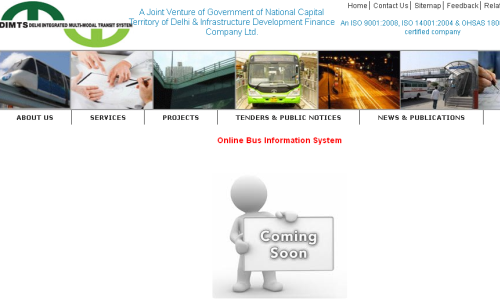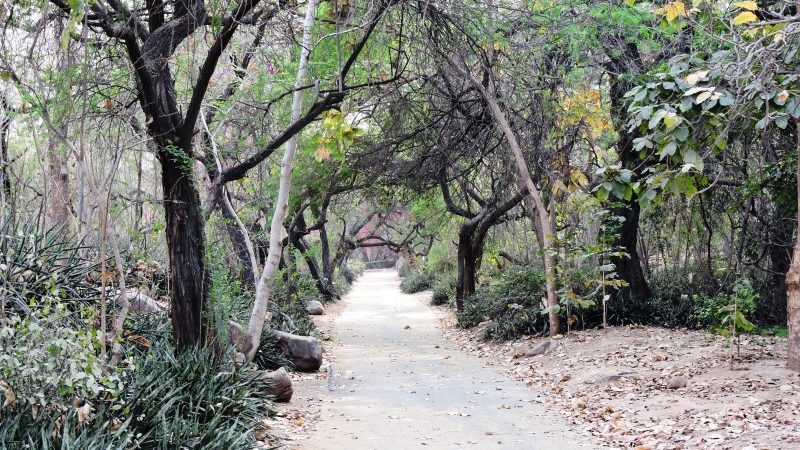Bus Rapid Transit (BRT) in Delhi: Who Failed Whom?

It was the April month in the year 2008. The recently launched Bus Rapid Transit (BRT) system in Delhi was being bombarded left and right (and in the middle – the lane meant for the buses) by the media and people alike. The BRT had come at a cost of several hundred heritage trees of Delhi, which were removed to widen the road and provide additional space for the overall architecture of the BRT. But this was not the reason why the BRT was being criticized in the media or objected to by a portion of the public. The “Bus” Rapid Transit had slowed down the flow of cars and similar private automobiles in its 5.8 km stretch was the principal reason why the media was bashing up the Government for having conceived and installed the BRT corridor.
Television interviews showed car drivers stuck in what looked like a traffic jam on the BRT, cursing the corridor and questioning its existence. Then there was the issue of pedestrian safety, since the bus lane was in the middle flanked by a car and scooter lane on either side. This seemed a genuine issue if we are to accept that vehicles in Delhi neither stop at the red light (which were installed for the pedestrians at each bus stand on the corridor), nor have any respect for the zebra crossing. Last, but certainly not the least, were the few fatal accidents that took place in the confusion of the 5.8 km long stretch of the BRT, mainly involving motorcyclists. This was the final nail in the coffin after which at least the mainstream media was convinced that the BRT is nothing less than a Tughlaqian disaster.
For many of us at Delhi Greens, who had just begun working with young people across the city in order to generate environmental awareness and promote sustainable urban development, the BRT seemed like a very good idea. It would promote the use of public transport, decrease the use of private vehicles, make commuting through public transport faster and more reliable, bring down air pollution, reduce greenhouse gas (GHG) emission and thus be a win win situation for all. The media’s outburst seemed uncalled for, since the Bus Rapid Transit was never meant to make it easy for the car and private vehicle users. It was a BRT not a CRT, and its implementation was a critical requirement for sustaining Delhi’s growth.
Besides, what we failed to understand was that why was the media and people not understanding that this was just a trial run on a stretch as small as 5.8 km. The latter is a very small fraction of the total road length in Delhi which is of the order of 29,030 lane km in the year 2008. A drastic change in the transport system over a small fraction would obviously not be easy and thus the trial run was being carried out. Agreed the government had chosen to experiment on what may be the busiest stretch in terms of traffic volume, and frankly we really did not understand why, but as the corridor would have been extended, things would obviously get in control. Much to our relief, media reports in that year were indicative of the fact that by the year 2010, the BRT corridor would be greater than 100 km in length.
In addition to this, several government figures were suggesting the use of Global Positioning System (GPS) on every bus on the corridor so the commuter waiting on the bus stand could be given an expected time of arrival (ETA) of her desired bus. We also deduced from media reports that many more buses will soon be added on the BRT thus reducing the waiting time for individual commuter. These were facts that reassured us that soon things will get better on the BRT and once everything is in place, the BRT will be nothing less than a rapid corridor to a green future. And so we teamed up with the Center for Science & Environment, put together an army of volunteers and spent the first week of May 2008 on the trial run of the BRT corridor – surveying and interviewing the commuters as well as the car users and motorists. And we then published our analysis which was seen as belated support for the BRT corridor from users (The Hindu).
All of us were aware that a project like the BRT has become operational at a huge cost to the taxpayer – to each one of us. Besides, we knew that the widening of the previous road for the corridor had taken place after the felling and transplantation of several hundred heritage trees. Therefore, for us it was project that was here and just had to deliver. It was perhaps for this reason that we did not think twice before spending from own pockets to carry out small and meaningful retrofits to the system. For example when we noticed that the metallic and stainless steel look and feel of the bus stands is not the best ambiance in the summer heat, and considering there was no water available to the commuters as they waited on these bus stands, some of us arranged for earthen pots fitted with hygienic handles and placed them at the bus stands. Such was the dedication we put in order to ensure that crores spent on this project are returned to us in the form of an excellent, clean and safe transport corridor.
However, that was not to be. And the first shocker came via media sources when we were informed that though the government would not scrap the project after its media failure, it will also not expand the BRT stretch either. This did not make sense since leaving the stretch as it is, was only going to create more confusion and chaos. But we waited, especially since the 5.8 km long corridor did become 14.5 km long, reaching all the way to the Delhi Gate. However still, neither was this enough, nor was the extended part of the corridor taken seriously due to the initial media outburst. The implementation of bus-on-bus track and cars-on-cars track remained the lowest in this part of the BRT corridor. At the same time, the GPS fitted buses never really came, or the system came but was either not used properly or its usage was not communicated to the commuters. The DIMTS website continues to feature the ‘Online Bus Information System’ as ‘Coming soon’.
The frequency of the buses on the BRT also did not improve, and commuters had to wait for long before boarding a bus of their choice. Except for constructing the several lane BRT corridor, apparently nothing more was done either to promote its usage, or to provide better access and facilities to the public transport users. Consequently, in the absence of any major difference, there was not much shift from the private vehicle users changing their lifestyle and choosing the public transport. The 14.5 km long BRT stretch obviously does not fit in well with the over 31,000 km of road length in the NCT of Delhi. But the bigger question here remains that is it the BRT as a system which has failed in Delhi, or its understanding amd implementation? The question that also needs to be asked is that till when will we continue to implement a project/policy first and decide its future based on the feedback we get after wasting crores of public money?
Editor’s Note: According to a recent media report on March 16, the Delhi High Court has given a ‘green’ signal to cars and autorickshaws to ply on the bus lane of the Bus Rapid Transit corridor on an experimental basis for six weeks. For those who understand how things work in Delhi, the above mentioned move could well be the beginning of the end of the BRT corridor in the city.
Image is a snapshot of http://dimts.in/passengerinfo.html




Delhi BRT is very good idea. but the implementation is not done properly. In fact let us understand the problem , understand the counties where it is successful. In Delhi it should be CRT – means it should be for the CARS only way. If you understand the traffic we have more cars on road then Bus. In countries , where Public Transport is best, use BRT , but where personal transport system is most used – use CRT. We should use separate corridor for Cars as cars makes the biggest part of the traffic. When you pass the BRT , you will find 90% traffic on NON BRT area and 10% in the BRT area. Now if you take out CARS from the main stream and let them pass through corridor the traffic will be divided 50-50. The BRT area will be full of cars and rest of the area with BUS / Three Wheels and Two wheels, Now when the bus stops the three / two wheels can pass from the side. so the traffic will remain moving. Where as in CRT cars will follow each other at high speed. Both the traffics will run smoothly. And we can construct more CRT’s . The great technology thought has to implemented with greater thought.
I would like to say that the BRT is a total failure…since contrary to expectations….it has forced many more like me to opt for a private transport(much against my preference)…the bus stops are bang in the middle…not one but two for each….and each time a bus came on the other stop than the one you were waiting at…u had to scramble out of one stop and jump to the other….risking your life…..no autos around after u get down…have to walk atleast half a kilometer in the mad traffic to get to a ‘safe place’….no place for pedestrians at all….no proactive action by the traffic police etc to curb cars using the bus lane and then at the intersection crossing paths….with those in the car lane….God what a mess!! I have now bought myself a car….learnt driving…..and just sit comfortably….rather than be treated like trash!!
We need to learn appreciate the spirit of an experiment. Inherent in the experiment is the idea that it, or parts of it, might fail. Failure teaches lessons for future.
It doesn’t he;p that the media are never-ready to report objectively or play a supportive/educative role in creating awareness about issues that impact our city and our environment. The point of a BRT or MRT is after all, to give preference to those modes because that is the only sustainable option we have! The Govt too, could have tried to launch a campaign to create awareness. The recent SC judgement is not going to help the cause either.
I hope all is not lost. We need to learn the lessons from the trial run. We need to create awareness that there is neither the space, nor the oil to sustain car travel in a city the size of Delhi. We need to learn to look at failure as a stepping stone.
To accommodate car travelers, maybe we can permit cars with full occupancy (3-4 people?) into the express lanes. If we still think we are stuck in the jam, we need to realise that the solution is to leave the car at home and take the bus!
For more people to make the switch we need to provide better service.
We must all work together if we want Delhi to be a livable city.
[Sorry to take so much space here…but I have a lot to say about our attitudes!]
The BRT corridor should be given another chance or, if not then another government maybe 😉